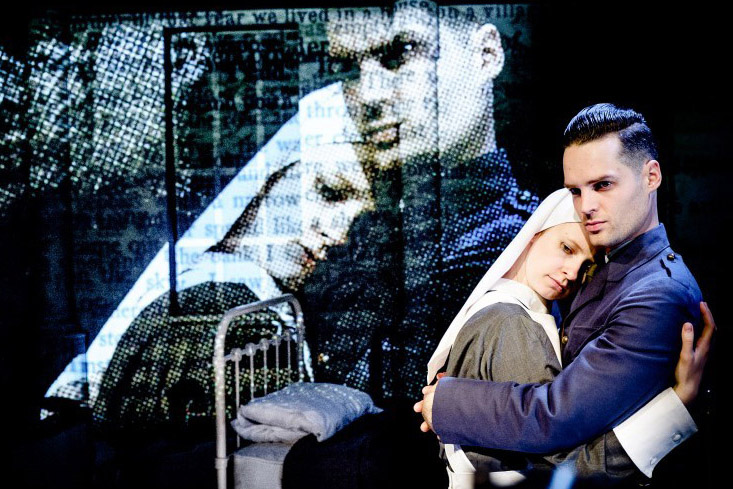 Ernest Hemingway’s expansive novel was first published in 1929 and situates a predictably tragic romantic narrative within the final year of the First World War—though predictability is not a complaint one could possibly level at this production of A Farewell to Arms as adapted by production company imitating the dog.
Ernest Hemingway’s expansive novel was first published in 1929 and situates a predictably tragic romantic narrative within the final year of the First World War—though predictability is not a complaint one could possibly level at this production of A Farewell to Arms as adapted by production company imitating the dog.
The story follows Frederic Henry (Jude Monk McGowan) and his time fighting as an American soldier in the Italian army including and eventually limited to his relationship with English nurse Catherine Barkley (Laura Atherton).
The characters who break into the dilapidated WWI hospital, a static setting that is consistently rendered entirely fluid, are described in the play’s promotional material as “readers”. They act not only as the facilitator between form and content here, they are the catalyst for some of the action. Their relationship with the text is more than indirect, not least because they take on many of the roles within it, but also because their cameras, their projections and the like enable and encourage the audience to feel more too.
Many times throughout the play both Frederic and Catherine, particularly the former, are rendered in close-up on the walls that surround them, either as they speak directly to camera or as an event occurs in which the directors feel empathy might be engendered from those watching: a smitten smile, a painful birth, and more. The moment where our romantic protagonists meet has them stood on opposite sides of the stage, backs to one another, with tight shots of their faces projected in between them, extremely close, appearing to gaze into one another’s eyes. The effect is wonderful, indicating a swell of feeling between strangers, which one cannot help but be swept alongside.
McGowan is robust and convincing as the lead, a certain brand of all-American obstinacy allowing unanticipated emotional subtleties and each of the chorus does solid work, particularly Macbeth. It is Atherton that interests me most. She plays Catherine to be almost cripplingly socially awkward in the first half of the play, a weirdness that only settles post-interval when it becomes clear she and Frederic are co-dependent, thrown together by lust and war and circumstance.
Atherton’s performance is one that confounds me still, even on reflection. Is it some kind of surreptitious genius? Is she supposed to be so annoying? Is it a commentary on women, whether of the period or through Hemingway’s eyes? I would argue not, but its imbalanced nature lends itself to readings of the play (and the novel) as one that is as variegated as its audience.
The final section of the play is a beautiful demonstration of durée, a moment that is eternal but changing, one that follows Fredric in the most genuine way. He tells a member of the chorus, in character, to “Get out!” and follows that by instructing the others to follow suit, including those apparently not within the scene. They turn off the cameras; they remove their costumes, sheepish, embarrassed. The audience, too, are suddenly self-conscious about the degree to which they have invaded this man’s life, the forensic level to which we have analysed his tribulations and traumas.
The chorus leave, and we feel we should too, but instead the lights remain on Fredric, as we examine him without cameras, without special effects, seeming as tangible and realistic as he ever does. That is what this play is: a fusion of modern form and era-specific narrative, by way of the agelessness of emotion. ★★★★☆ Will Amott 20/11/14

